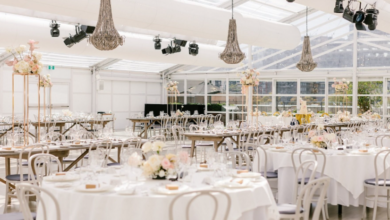The Psychology of Color: How Graphic Designers Influence Perception

Color is far more than just a visual element, it shapes our emotions, choices, and even perceptions without us realizing it. Each hue carries psychological meaning and cultural associations, giving designers a powerful tool to connect brands with audiences. When collaborating with a digital graphic designer in Fort Lauderdale, clients benefit from deep expertise in how color can subtly influence user reaction and perception. Leveraging the science behind color, professionals foster trust, spark excitement, or encourage action through carefully chosen palettes. The artful application of color becomes a silent language, guiding users toward positive engagement and lasting impressions.
The Science Behind Color and Emotional Response
The impact of color begins in the brain, where visual signals trigger emotional responses and memories. Reds are known for creating energy and urgency, explaining their use in sale signage and call-to-action buttons. Blues inspire calm and trust, commonly seen with banks and healthcare. Greens evoke growth, health, and harmony, popular choices for eco-friendly and wellness brands.
Color interpretations can change depending on cultural backgrounds and context. For instance, while white symbolizes purity in some societies, it signifies mourning in others. Designers must navigate these intricacies to create work that resonates with diverse and global audiences.
Color Strategy in Business and Branding
Recognizing the importance of graphic design in business means seeing beyond mere visuals, design shapes audience perception and builds brand identity. Consistent color use across product packaging, websites, and advertising can boost brand recognition and trust. Major brands famously trademark their signature colors for this reason.
On digital storefronts, color guides users along the buying journey. Warm colors can prompt quick decisions, while cool shades build credibility at checkout. Simple changes in button color can mean noticeable differences in user click-through rates, revealing the real impact of well-planned color choices.
See also: Choosing the Right Life Insurance Plans for Your Future
Designs that Enhance User Experience
The modern digital landscape continually redefines how colors influence behavior, especially at the intersection of graphic design and user experience. Screen-based environments present unique challenges, brightness, device type, and ambient light all shift color appearance. Designers must choose palettes that are effective across all scenarios, including for those with vision impairments. High contrast for accessibility sometimes must be balanced with subtle color psychology.
Color Applications Across Industries
Industry-specific color strategies further demonstrate the influence of color psychology. Healthcare brands gravitate toward blues and greens to signal safety and reduce anxiety. Tech firms lean on cool blues and grays for modernity and dependability. Restaurants often opt for reds, oranges, and yellows to boost appetite and create energy, while fine dining venues select deep, sophisticated tones.
Measuring What Works
The effectiveness of color choices can be quantified. Techniques such as heat mapping and A/B testing reveal which colors boost engagement or drive sales. Brand recognition surveys assess how well color choices support market positioning and audience recall.
Conclusion
Color psychology gives graphic designers a silent yet persuasive language to communicate, shape opinions, and guide actions. Drawing on science, cultural nuance, and analytics, professional designers create experiences that transcend aesthetics, helping organizations foster emotional connections and drive desired outcomes through every visual touchpoint.







